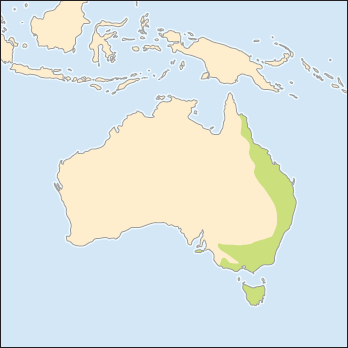
All right, who put Photoshop on God’s computer? (Photo by Stefan Kraft)
To understand the essentials of the platypus you need only know how the great minds of Europe first reacted to it.
It was discovered by European explorers in 1798 in Australia. A pelt and a sketch of the living animal was sent to Britain, which in those days took quite some time, and British scientists immediately declared that it was a fake, a hoax, an impossible animal. It had the beak of a duck, the tail of a beaver, and the body of an otter. It was like sewing a fish to a monkey and calling it a mermaid — there was just no way it could be real.
Indeed the platypus is an improbable creature, but it’s very real and lives all along the wet eastern coastal areas of Australia. As a monotreme it is already extremely weird because it is a mammal that lays eggs, as we covered in the previous article. It spends much of its time in water and has webbed feet and a tail much like a beaver’s, used for swimming and for storing fat. It also has a ridiculous rubbery duck-like nose, and the adults have no teeth. But all of that is only the beginning when it comes to the list of things that make the platypus so very strange.
For one, the platypus is one of the only venomous mammals in the world. A venomous animal is one that injects toxins into a victim, for example through a bite or a sting; this is different from a poisonous animal, which is toxic if touched or eaten.
A platypus won’t bite you (it has no teeth) or sting you (it has no stinger), but the male platypus has a bone spur on its ankles that it can use to stab something and inject it with venom. This venom is strong enough to kill animals as large as dogs, and while it won’t kill a human it is described as incredibly painful and debilitating. In some cases being stabbed by a platypus will leave a person sensitive to pain for days or even months afterward. On the plus side, you could tell people you were stabbed by a platypus.
Since only males produce this venom, it is believed that it exists not for self-defense but for fighting between one male and another during the breeding season. There’s nothing quite like stabbing your rival with a bone spur and injecting him full of deadly toxins when it comes to asserting social dominance.

“It’s not the size of your ankle spur that counts, it’s how many guys you can stab with it.” (Photo by peterdvv)
The large duck-like bill on a platypus is not quite like a bird’s. Where bird bills open halfway up so that the entire structure is a mouth, a platypus’s mouth opens from the underneath, and most of the bill is in fact home to an astonishing super-power possessed by the platypus — electroreception.
When a platypus dives under the water it seals off its eyes and its nostrils, leaving it completely blind. It gets around this problem by having a large number of electroreceptors on the top of its bill. These can detect very tiny electrical charges in the water. How tiny? The platypus detects moving objects by sensing the miniscule electrical energy produced by moving muscles.
In this manner it waves its head back and forth through the water when hunting, and anything that moves or tries to run away can be instantly sensed, chased, and eaten, including worms, shrimp, and crayfish.
Though the platypus lays eggs, the eggs are actually held within the female’s body for four weeks before she lays them. She will then snuggle up with the eggs to incubate them for a further ten days before they hatch. A baby platypus is born with teeth, but they fall out and are replaced by a dense keratin plate that is used to grind food.
For a long time scientists weren’t sure if the platypus really did lay eggs. By 1884, nearly a hundred years since its discovery, they still didn’t know, and so they sent naturalist W.H. Caldwell to find out. After a long search he discovered and studied a clutch of platypus eggs, and learned the truth. Since wiring to England was expensive, and since one had to pay by the word, Caldwell announced his discovery to the world with only four words, a masterwork of brevity and understatement. “Monotremes oviparous,” he wrote, “ovum meroblastic.” While this sounds like perhaps a secret code, this was the very first confirmation that the platypus laid eggs like a reptile.
Throughout this article I have been avoiding using any plural forms for the platypus, and that’s because no one really knows what the correct plural should be. Some people call them platypi, using the Latin ending, but this is not right because “platypus” is not a Latin word. The technical plural, in Greek, would be “platypodes”, but they are also called platypuses or simply “platypus”, as in, “there goes a herd of platypus”. You would never see a herd of platypus, because they are solitary animals, but there you have it. The word “platypus” itself is Greek for “flat-footed”.
A baby platypus likewise does not have a proper term, but it has been suggested — and I think you will agree that this is adorable — that we call them platypups.
